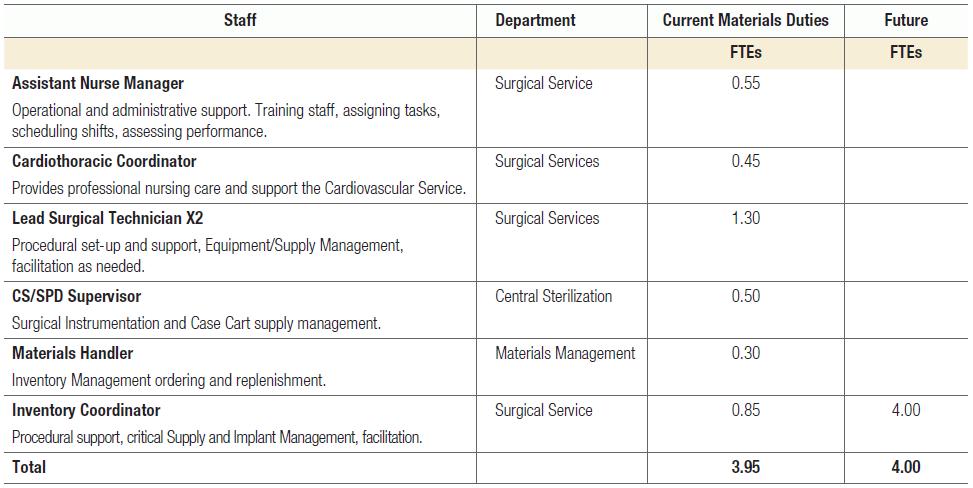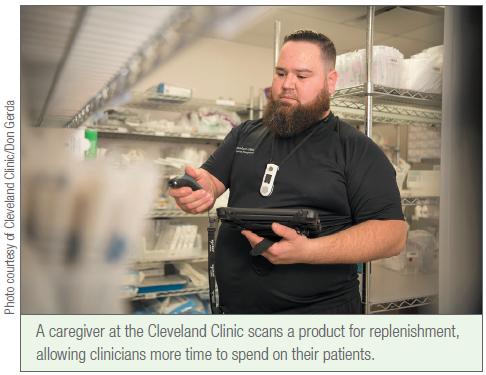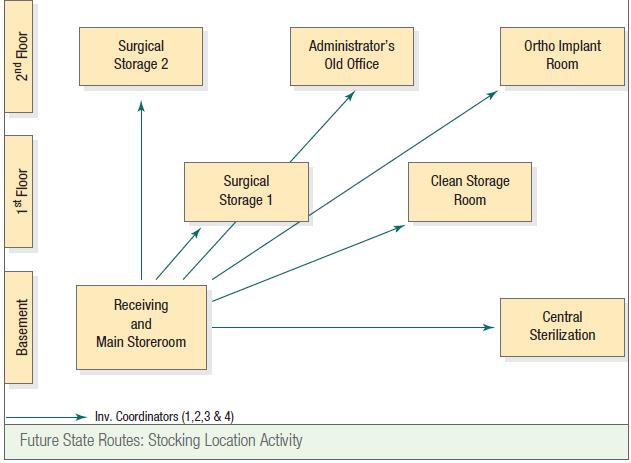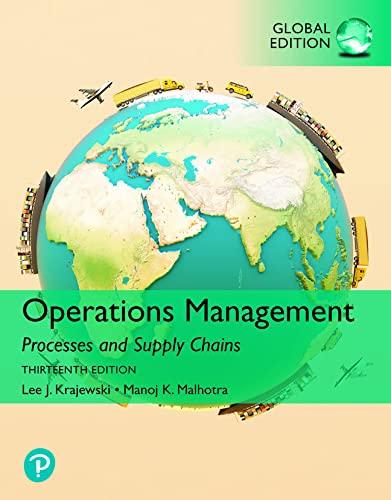Cleveland Clinic is one of the nation's most respected research and academic hospitals, garnering top ratings annually
Question:
Cleveland Clinic is one of the nation's most respected research and academic hospitals, garnering top ratings annually in U.S. News and Word Reports rankings of healthcare providers for more than two decades. Headquartered in Cleveland, Ohio, the organization has more than 260 facilities throughout the United States and the world and is focused on providing superior patient safety and quality as evidenced in its clinicians' commitment to providing patients with the best care anywhere.
One of its top facilities in Cleveland, Fairview Hospital, is particularly well known as a clinical "Center of Excellence," enjoying national recognition for its birthing services, cancer center, emergency and Level II trauma, heart center, and surgery. Founded in 1892, Fairview Hospital is a faith-based community hospital with 488 licensed beds and is fully accredited by The Joint Commission, the nation's premier healthcare accrediting agency. The hospital performs about 11,000 surgical procedures annually. General surgeries have the highest volumes at about 3,000 procedures annually, followed closely by Obstetrics/Gynecological, Urological, and Orthopedics as the most frequently performed procedures.
Recently, the Inventory Management Transformation team within the Supply Chain Management corporate organization, performed work flow assessments at Fairview Hospital utilizing Six Sigma Process Improvement concepts. Skilled and licensed clinical staff, such as registered nurses in the Surgery Department, were required to spend a great deal of time walking around their units to inspect and inventory critical surgical supplies. Could the design of the process be the culprit? The staff annually required over 18,400 unique supplies provided by 327 unique vendors, with a value of close to $20 million, spread over numerous storage locations. An enterprise initiative to support clinicians performing at the height of their licensure recognized that time away from direct patient care for this skilled clinical staff could have an adverse impact on patient safety and wished to minimize this risk.
As noted in Figure 2.6, a Six Sigma Process Improvement project includes the following five steps:
1. Define: Outlines the scope and boundaries of the process to be examined
2. Measure: Selects the metrics for collecting data about the area of interest
3. Analyze: Discovers gaps between actual and expected performance
4. Improve: Generates ideas for improving the process, based on the gathered metrics
5. Control: Observes how well the chosen improvement process is working after implementation To better understand the workflows and the amount of clinical time dedicated to daily supply procurement, the supply chain team conducted a "time and motion" study of the Fairview Surgery Department to measure different activities. The goal was to understand the current state of responsibilities and time commitments required for all supply chain functions within Materials Management staff, central sterilization technicians, Fairview surgery nurses and Fairview surgery inventory personnel. For the skilled and licensed staff, the team narrowed the scope to observing the time it took to inspect and inventory the required supply items each day. This included mapping not only travel time, but also locations of supplies routinely needed for medical and surgical care.
The study started with questioning and brainstorming with staff to understand the work being done, who was doing it, the frequency of each task, locations, and relative value in the greater scheme of job duties. An example of this work was the daily inspection of hardware needed for trauma surgeries, such as broken bones. On a daily basis, an assistant nurse manager had to physically inspect a large steel cabinet in the "administrators old office" that contained the essential hardware items for surgical procedures.
This cabinet was located on the second floor, as noted in the Stocking Location Activity and Roles "before" diagram shown below. Similar to a hardware store, the cabinet contains multiple drawers filled with various sizes of small screws, pins, rods, and plates of a wide variety of configurations.
Performing the inspection is a standard inventory review task, but does not require someone with a nursing degree and years of surgical experience to determine which product needs replenishment. Yet this was exactly what was happening.
Additionally, the study revealed that the daily time commitments within these workflows equaled four full-time equivalent employees of work, spread across a total workforce of approximately 190 staff. This was time that was being taken away from patient care and safety, both mission-critical imperatives for the hospital staff. To measure staff movements, the project team mapped the actual travel activity. As shown in the graphic below, the arrows indicate the paths skilled and licensed personnel had to travel to secure inventory items. Not only did these trips require travel between multiple floors of the hospital, but the staff also had to move between multiple locations on those floors. The team knew that any time spent in transit was time not available for patient care.
As analysis began, the team brainstormed on ideas for improving the process. Was there a way to reorganize the supply procurement process for improved efficiency and increased patient safety? How would such a reorganization impact clinical and licensed staff workflow? If the staff were no longer tasked with procuring the necessary items each day, who would fill this role instead? The chart below shows which personnel were observed and how much time they spent on non-value-added duties as part of this study, in terms of full-time equivalent (FTE) employees. For instance, the assistant nurse manager was spending over half her shift on inventory (material) related tasks.
As the team focused on ways to improve the process, they knew they needed to remove non-value-added activities from the purview of clinicians so they could spend their time on patient care responsibilities.
As a result of the time and motion study analysis, Fairview Hospital's Surgery Department established a new staff workflow model under the control of the Materials Management Department, shown below, that required a realignment of the existing surgical inventory coordinator to report to the supply chain organization and take over those duties that were formerly handled by the hospital staff shown in the chart above. Three additional supply chain staff were hired by the Materials Management Team to support the entire Surgery Department. The hiring of these staff relieved the clinicians of the tasks of checking surgical hardware inventory, and implementation of this solution across the Cleveland Clinic enterprise, to date, has returned over 22,000 clinical work hours back to the nurses for increased time spent with patients under their care. While it did not reduce costs as additional supply chain staff had to be hired, the project brought standard work, tools, and inventory management expertise to the Surgery Department, and allowed clinicians to perform within the scope of their training and expertise.

Fairview Hospital also incorporated "periodic automatic adjustment" of inventory levels to determine the quantity of supplies that should be on hand at all times for the Surgery Department. This reorganization gave the supply chain organization the opportunity to optimize stocking levels, saving the organization over $2 million in 2019 alone.
As part of the last step of the Six Sigma process, Control, the Supply Chain organization leveraged the Inventory Management Transformation Center of Excellence. This group is charged with developing and managing approaches to exercise control over inventory movement, expiration dates, and consolidating supply chain roles and responsibilities to bolster the organization's "Patient First" goals. For high-dollar inventory items, this team has added RFID tags to track serial numbers and expiration dates and generate automatic reordering of those items as they are used in procedures.
QUESTIONS
1. In addition to the time and motion study the Cleveland Clinic followed, what other work measurement techniques might have been used? Why?
2. Which data analysis tools and metrics might have been used to quantify what the project team observed in the daily travel workflow?
3. After reviewing the various process strategy and analysis techniques in this chapter, what else could Cleveland Clinic do to make the Six Sigma process improvement project even more effective?
Step by Step Answer:

Operations Management Processes And Supply Chains
ISBN: 9781292409863
13th Global Edition
Authors: Lee Krajewski, Naresh Malhotra, Larry Ritzman





